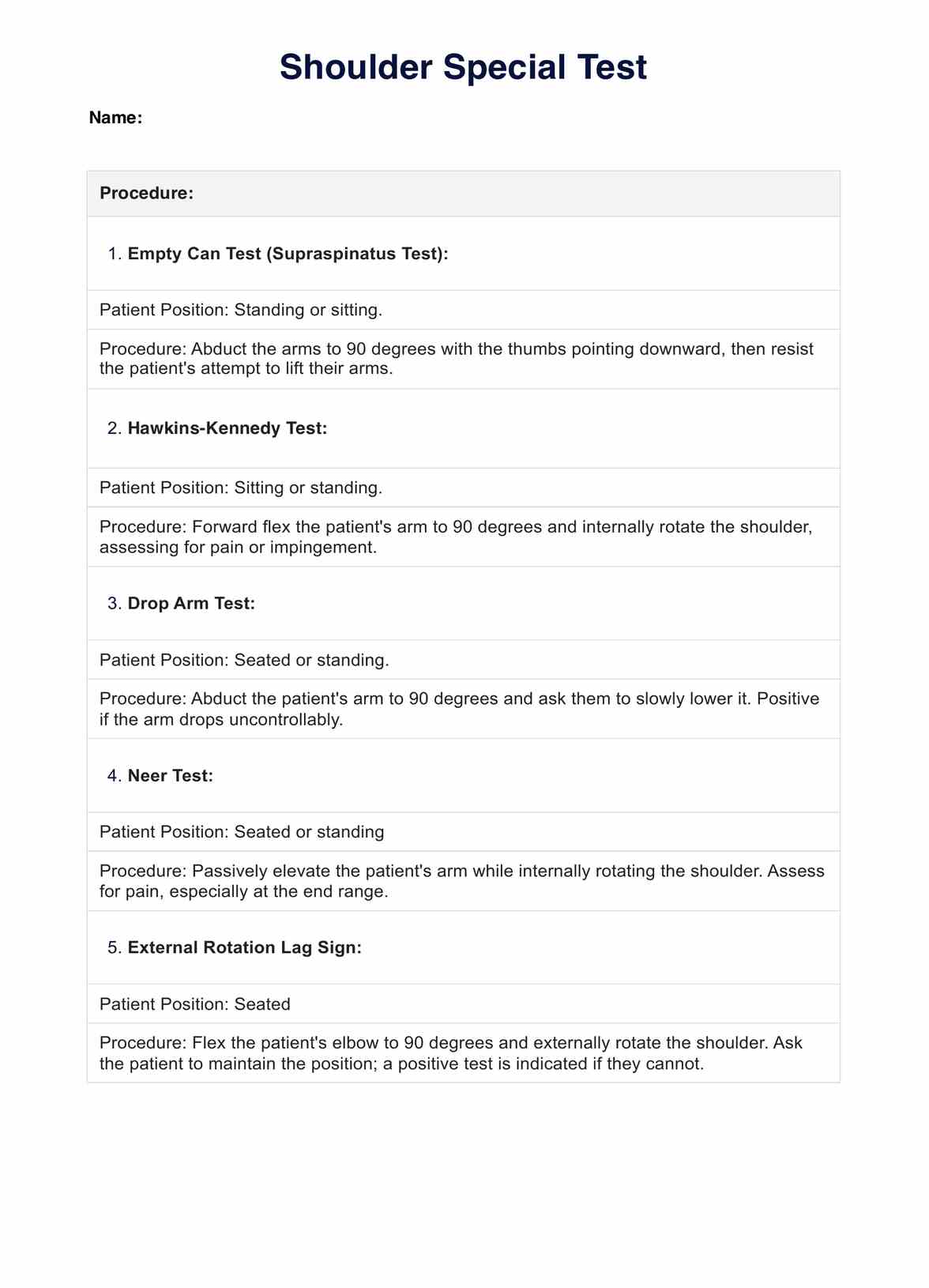These are specific physical maneuvers performed by your doctor to assess the function and stability of your shoulder joint, tendons, and ligaments. Each test targets different structures of the affected shoulder, helping to identify possible causes of your pain.

Shoulder Special Test
Efficiently assess shoulder health with our Shoulder Special Test to diagnose injuries, evaluate stability, and guide rehabilitation.
Use Template
Shoulder Special Test Template
Commonly asked questions
While some discomfort is common during the tests, they shouldn't be excruciatingly painful. If you experience significant pain during any test, let your doctor know immediately.
These tests provide valuable clues, but they're not foolproof. Your doctor might need additional imaging tests like X-rays or MRIs to confirm the diagnosis and determine the best treatment course.
EHR and practice management software
Get started for free
*No credit card required
Free
$0/usd
Unlimited clients
Telehealth
1GB of storage
Client portal text
Automated billing and online payments











